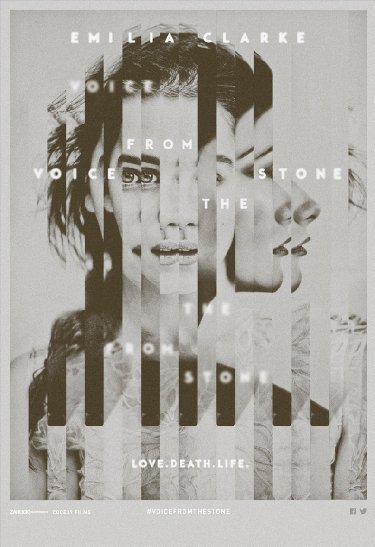The first installment in the MOnster Musings Series is a review of The Hunt for the BTK Killer (2005)!

This made-for-TV movie was produced by Diana Kerew Productions, distributed by CBS and directed by Stephen Kay from a script written by Tom Towler, Donald Martin and Robert Beattie (who also wrote the book Nightmare in Wichita: The Hunt for the BTK Killer). It starred Gregg Henry who, in his 35-some years in show business has appeared in numerous movies and countless TV shows, as BTK Killer Denis Rader and Oscar nominated Robert Forster as his nemesis, Detective Jason Magida.
The film first aired on network television on October 9th, 2005, a mere four months after Denis Rader was arrested in Wichita, KS, on charges of murdering ten people as the self-named Bind Torture Kill serial killer. The DVD was released by Sony Pictures and runs for 88 minutes. Other than French and Portuguese soundtracks and English, French and Portuguese subtitles, it has no special features.
Unlike some of the recent movies made about factual serial killers, this one remains extremely true to the Bind Torture Kill story. It is, however, clear that this is a made-for-TV movie as the creativity of the production team is very obviously limited by the need to manufacture something that would be palatable to television’s vanilla-fed audiences. Kay and his team, particularly Cinematographer Bobby Bukowski, have, however, managed to tweak the film to hint at deeper themes and their attempts in this regard should not go unnoticed.
The film is structured around Dennis Rader’s reading of his confession to the court that would eventually award him ten consecutive life sentences. The story does not advance in a linear fashion but rather jumps between courtroom scenes, scenes of Rader’s life just prior to his arrest and scenes of the murders themselves. Each of the three scene series also has its own distinct shooting and lighting style and viewers are led from the pedestrian-like shot and lit courthouse scenes to the evocatively lit and darkly colored scenes of Rader’s double life to the jerky, out of focus, home-movie style murder scenes. This constant alternating does not detract from the movie but rather gives viewers a taste of the fractured and multi-layered world that Rader must have lived in.
The most interesting of the scene types must surely be those where the viewer is being walked through Rader’s repressive and malignant day to day life in Wichita and you see him both literally and figuratively move between the dark and the light. Tapioca-bland frames of Wichita normality suddenly morph into green-tinted shots of Rader alone in his shed where the BTK persona comes alive and interesting death-in-life motives are created with shots that have Rader’s darkness literally framed by outside light. An example of the latter would be the shot where the darkness of Rader’s eyes as reflected in his car’s rear-view mirror is floating in the sea of light created by the suburban view through the windscreen. Finally, the film’s action is bracketed by sudden fades to black and white: first white, when the film segues to the initial murder flashback and then black, after the police have confronted Rader’s priest about their suspicions. Obviously, the juxtaposition of the light and dark themes refers directly to that of Rader’s public persona and his hidden BTK one but the movie does not overtly labor this and only gives subtle hints that are only noticeable if the viewer looks for them.
The murder scenes are also memorable, both for their almost fanatical attention to the details as set out in Rader’s confession and for their being shot in a totally different style from the rest of the movie where odd camera angles and odd framing is the order of the day. Out of focus and color corrected almost to the point of garishness, the murder scenes are reminiscent of those shot and then played on television by murderers Henry Lee Lucas and Ottis Toole in the iconic serial killer film Henry: Portrait of a Serial Killer. They also give the viewer an insight into Rader’s mind by showing how he perceives the killings and the strangeness of the scenes thus merely reinforce the viewer’s understanding that Rader is an aberration. The Otero murder flashback scenes are especially memorable for their initial plunge into darkness when Rader first steps into the scene and for their almost kaleidoscopic use of light fragments which hints that, at the time of Rader’s first killings, his psyche was perhaps not as baldly divided into good/bad and dark/light as it would later become.
The storyline does not have any surprises and almost completely mirrors the facts of the case. The dog sub-plot is an interesting addition and is perhaps the most disturbing element in the entire film as it provides the “can we stop this if we act in time?” aspect that must, by necessity, be absent from a film dealing with decades old murders. The editing on the whole apes that of TV procedurals but there is an interesting sequence of cuts that plays homage to the technically perfect surprise-house sequence in The Silence of The Lambs.
Gregg Henry’s portrayal of serial killer Rader is compelling, and he has managed to create an extremely creepy on-screen persona. When played against dreamily repetitive ice-cream truck music, his scenes take on a malignant surrealism with people going about their business on the crust of society and all the while never dreaming that this crust covers a rotten filling.
You can find the movie on Netflix or Youtube Rentals, and here’s the trailer:
Much love from The MOnster!



